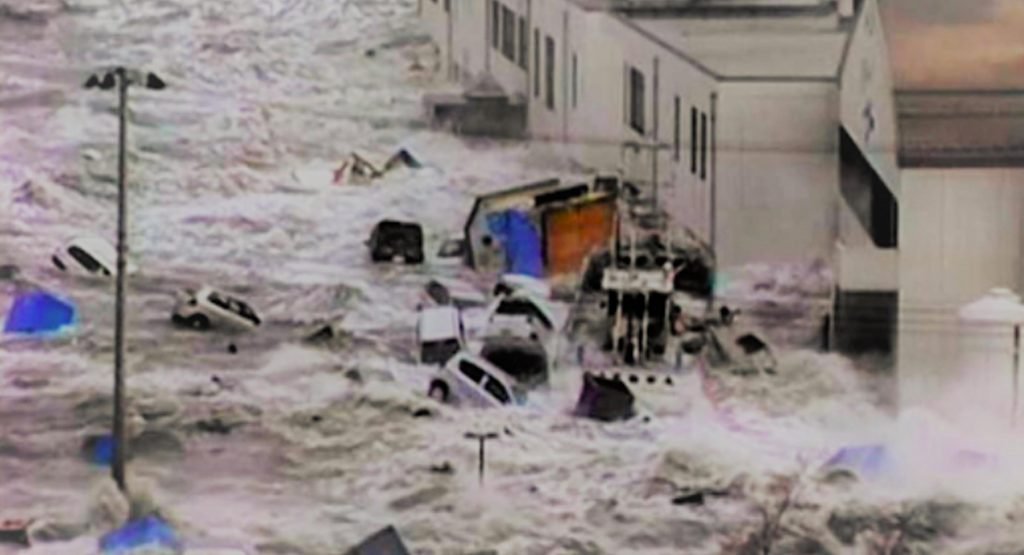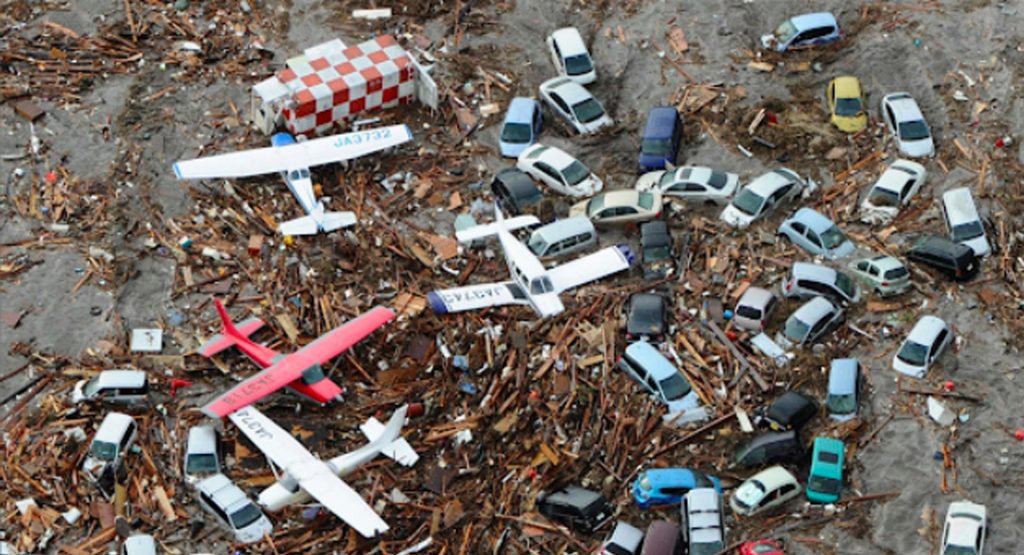FOR IMMEDIATE RELEASE:
UH Grant-Supported Research to Focus on Tsunami Damage Caused by Debris

(Above and below) Debris from the 2011 Tohoku tsunami, image courtesy of UH Manoa.

Honolulu, June 12, 2022 A four-year, $356,642 National Science Foundation grant will support a University of Hawai'i at Manoa scientist investigating how the accumulation of debris piled up against buildings as the water rushes inland increases the force and damage of the tsunami waves.
The hope is that this public impact research will lead to the construction of buildings more resilient to tsunami waves and debris.
When people consider the damage caused by massive tsunami waves, most only think about the large waves rushing ashore, UH researchers said, However, what about the damage imposed by everything else that the waves sweep up, such as shipping containers, structures, and vehicles?
UH Manoas Department of Civil and Environmental Engineering Assistant Professor Hyoungsu Park will work with a collaborator at Louisiana State University to conduct experiments on elevated buildings at the NSF-supported Natural Hazards Engineering Research Infrastructure facility at Oregon State University.
Park said results of the experiments will lead to recommendations to improve existing design guidelines to construct safer buildings, identify factors that affect debris damming to determine measures that help reduce or mitigate the damming loads, and improve tsunami vulnerability assessment of existing buildings for characterizing risk and resilience.
The 2011 Tohoku Tsunami alarmed the researchers to predict and prepare for future tsunami events, Park said in a UH press release. Hawai'i is surrounded by active subduction zones, referred to as a Ring of Fire, and will never be free from these coastal disasters. Through these physical modeling studies, we will identify and document mechanisms that cause tsunami-induced debris damming (accumulation) and resultant damming loading. The research outcomes will reduce the potential damage and identify improved mitigation and retrofit measures for buildings. The project eventually improves the current design guidelines for better resilience in coastal communities.
Different types of debris representing scaled shipping containers, logs and vehicles will be deployed using a large wave flume during the experiments.
Park will examine various facets, including how the debris interact with other pieces of debris, how the debris flow toward and around buildings, and how the debris interact when striking the buildings.
The optical measurement and IMUs (internal measurement unit) sensors, which are chipped in the debris, will be utilized to track the motions of the debris.
The data will be utilized to parameterize debris damming and loadings, and eventually be shared with the research community on the NHERI website. This research will also contribute to NSFs role in the National Earthquake Hazards Reduction Program.
The project will include research opportunities for undergraduate students through the Summer Undergraduate Research Experience program in UH Manoas Undergraduate Research Opportunities Program and graduate students to participate in the experiments and computational modeling, outreach activities to engage high school students in the experiments, and webinars for researchers and practicing engineers to promote the adoption of the research findings.

Hyoungsu Park, UH Manoa Department of Civil and Environmental Engineering Assistant Professor. Screenshot courtesy of UH Manoa.






